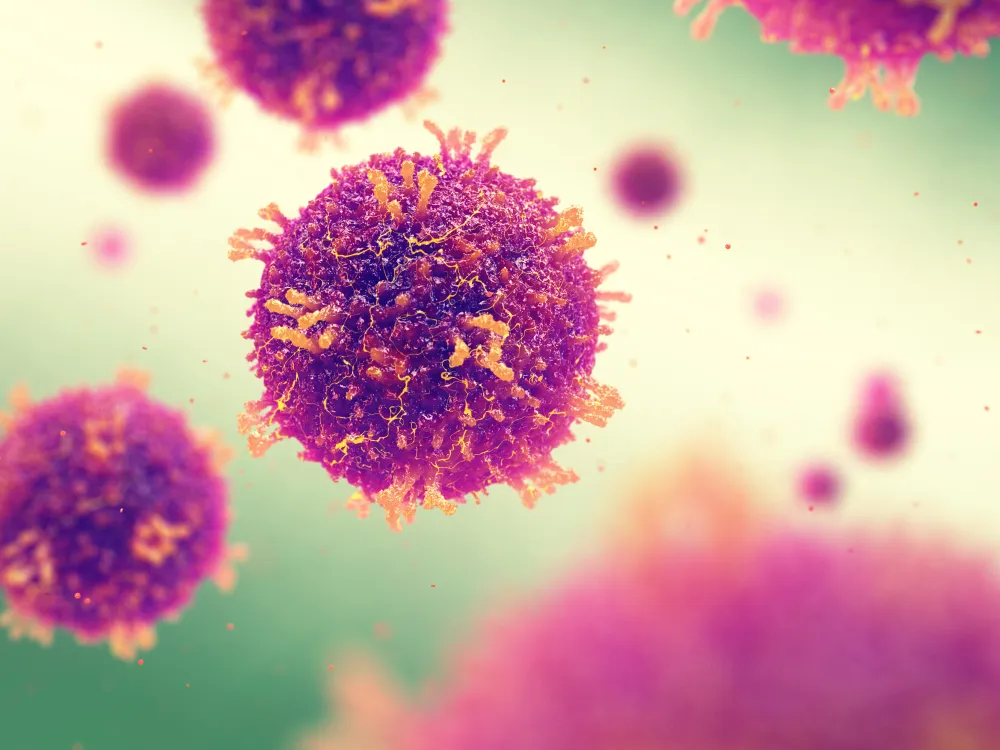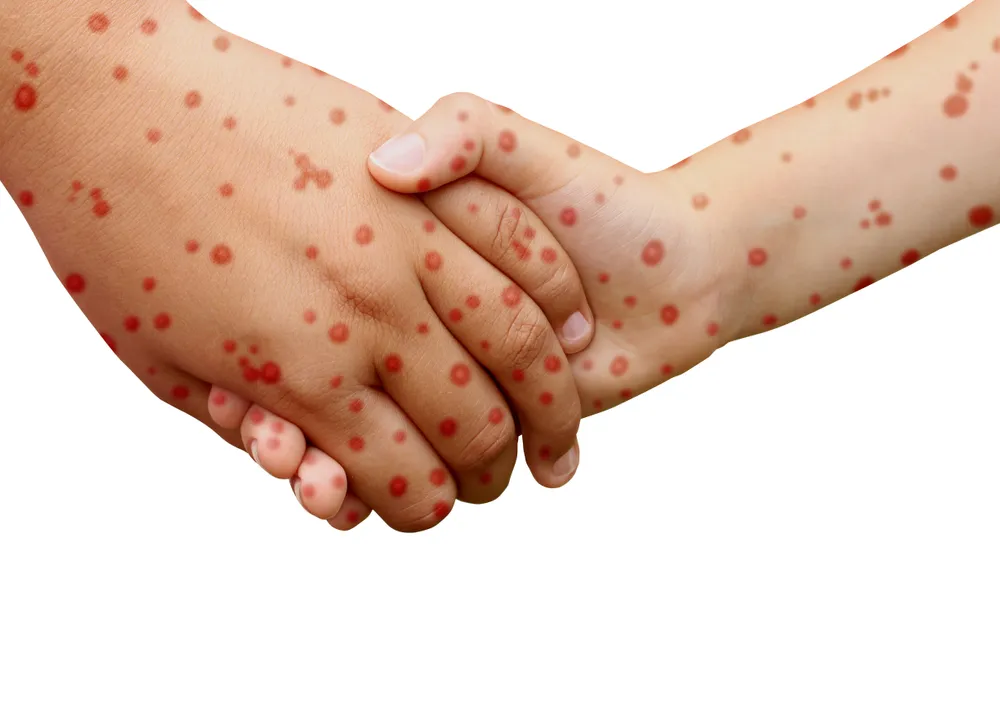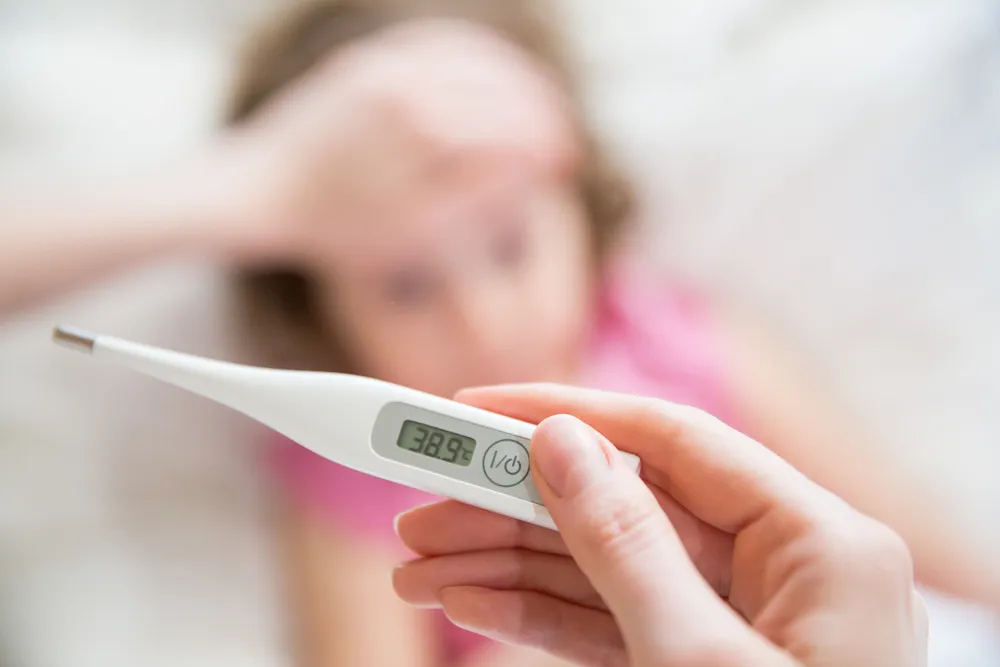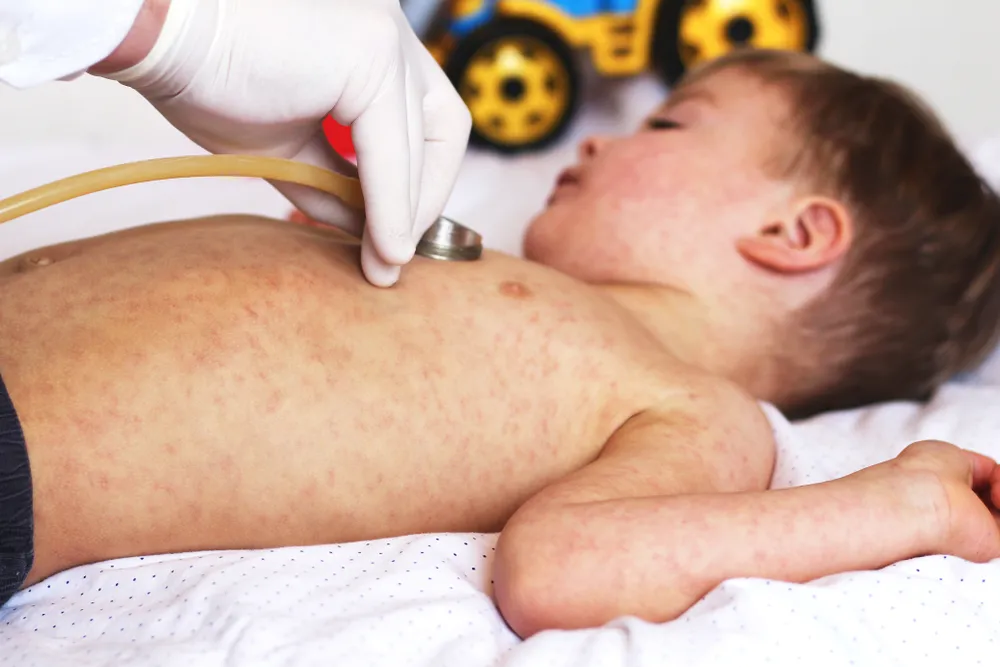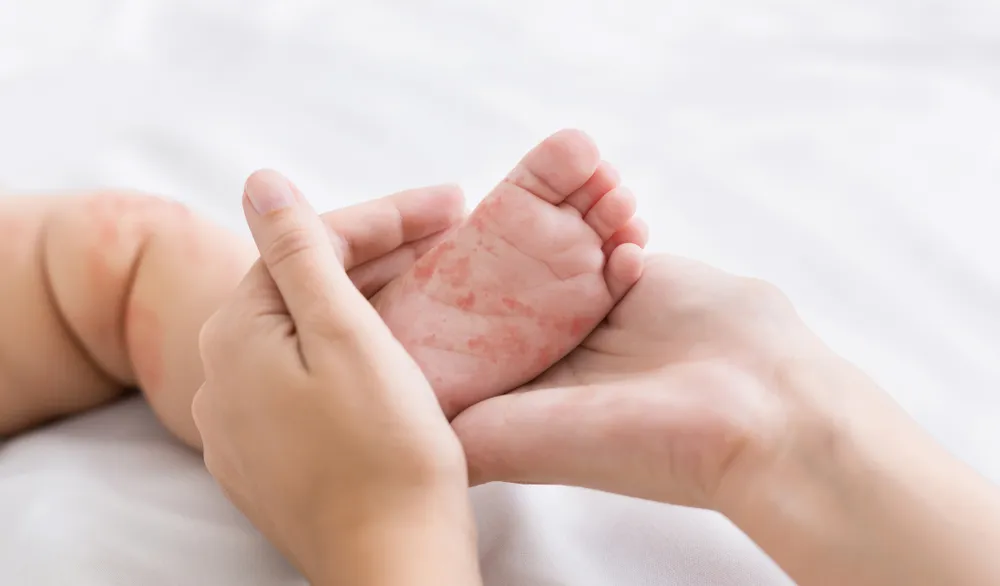As a parent, you’ve likely seen the measles on your child’s vaccination sheet. But what does measles actually look like? More importantly, how do you know if your child has it?
This childhood infection hasn’t been widespread in years thanks to high vaccination rates, but unfortunately, there have been a few cases throughout recent years. Despite the fact that the death rates have been declining, parents should still get informed on the virus, so here’s a closer look at the signs and symptoms of measles in children, as well as any treatment options.
1. What is the Measles?
Measles, also known as Rubeola, is a childhood infection brought on by a virus. At one time measles was very common among children, but you’ll be happy to know it can now be prevented nearly 100-percent and that is possible by making sure your child receives their vaccination. That said, in certain cases measles can still be very serious and even fatal for small children. To give you an idea of just how serious, even with vaccination at an all-time high, measles still causes more than 100,000 deaths a year, most of which are under the age of 5.
That’s enough of the scary stuff. Now, what should you look out for in your child to catch measles early on?
2. No Symptoms
In most cases, measles takes place in stages over a period of two to three weeks. For the first two weeks after becoming infected, children tend not to show any symptoms. This is one of the reasons measles is often unknowingly spread from person to person.
3. 2-3 Weeks After The Measles Infection Takes Place
Often beginning in the third week, children can start to show the following symptoms:
- Mild Fever
- Persistent Cough
- Runny Nose
- Photophobia (sensitivity to light)
- Sneezing
- Inflamed Eyes (conjunctivitis)
- General Body Aching
- Watery Eyes
- Sore Throat
Due to many of these symptoms being symptomatic of illnesses other than just measles, it’s important to consult your doctor as quickly as possible to understand if your child actually has measles.
4. 2-3 Days After the First Symptoms Appear
Two to three days after the symptoms above set in, your child may start to experience tiny red spots with blue-white centers inside their mouth and throat, as well as around their cheeks.
These are called Koplik’s spots, named after Henry Koplik, a late 19th-century pediatrician who published a short description of them in 1896, and they tend to fade along with the other measles symptoms.
5. 3-5 Days After the First Symptoms Appear
Around day three, children often begin to develop the rash that is most commonly associated with having measles. This rash consists of splotchy red spots, often in clusters, that can raise up from the skin.
Beginning with the face (specifically at the hairline) and around the neck, this rash progressively spreads over the next few days to the rest of your child’s body. The most common areas for the rash to spread to are the torso, arms, and eventually the thighs, legs, and feet.
As this rash spreads, your child’s fever that presented itself earlier on tends to rise, sometimes as high as 104 to 105.8 F (40 to 41 C). It’s also important to note that before the rash begins, your child’s fever may fall, only to rise again when the rash appears.
6. 5-7 Days After the First Symptoms Appear
In most cases, beginning around the third week, the measles rash finally begins to recede. First from the face and lastly from the thighs and feet. This generally marks the beginning of the end of the measles infection in your child.
7. Other Possible Complications
According to the Centers for Disease Control and Prevention (CDC), beyond the normal symptoms detailed above, approximately 30-percent of people with measles experience one or more of the following complications:
- Pneumonia
- inflammation of the brain (encephalitis)
- ear infection
- bronchitis
- croup
- severe diarrhea
- blindness
- pregnancy complications, such as miscarriage or preterm labor
- subacute sclerosing panencephalitis (SSPE) (degenerative condition of the nervous system that develops years after infection)
These potentially life-threatening, preventable complications mark the importance of having your child vaccinated.
Treatment
8. How is it Treated?
The best form of treatment for measles is prevention in the form of vaccination. Children can receive their first vaccination at 12 months, or sooner if traveling internationally, and their second dose between the ages of 4 and 6.
9. Who Shouldn’t Get Vaccinated?
However, there are some groups of people who shouldn’t get vaccinated, including:
- people with previous life-threatening reactions to the measles vaccine or its components
- pregnant women
- immunocompromised individual (can include people with HIV or AIDS, people undergoing cancer treatment, or people on medications that suppress the immune system)
10. Should I Consult a Doctor?
Fortunately, for children experiencing measles, symptoms begin to go away by themselves around the second or third week without any dedicated form of medical treatment. That said, you should absolutely still consult your doctor at the first signs of measles.
11. What Can Parents Do From Home?
To help with treatment and recovery, your doctor might recommend:
- a measles vaccine, given within 72 hours of exposure
- a dose of immune proteins called immunoglobulin, taken within six days of exposure
- acetaminophen (Tylenol) or ibuprofen (Advil) to reduce fever
- rest to help boost the immune system
- plenty of fluids
- a humidifier to ease a cough and sore throat
- vitamin A supplements
12. Prevention
It’s also important to remember that around four days before the measles rash appears until around four days after having it, children can still spread measles to other people.
Children (or anyone), if they’re not immune, are 90-percent likely to get measles if they’re around someone who has it. Your child is most likely to get measles either through touching an infected surface and then touching their eyes, mouth, or nose, or by breathing in infected air (measles can live for up to 2 hours on a surface or in the air).
It goes without saying, then, that good hygiene practices and having your children avoid close contact and public places during the period wherein they can infect other people helps to avoid spreading measles around.

